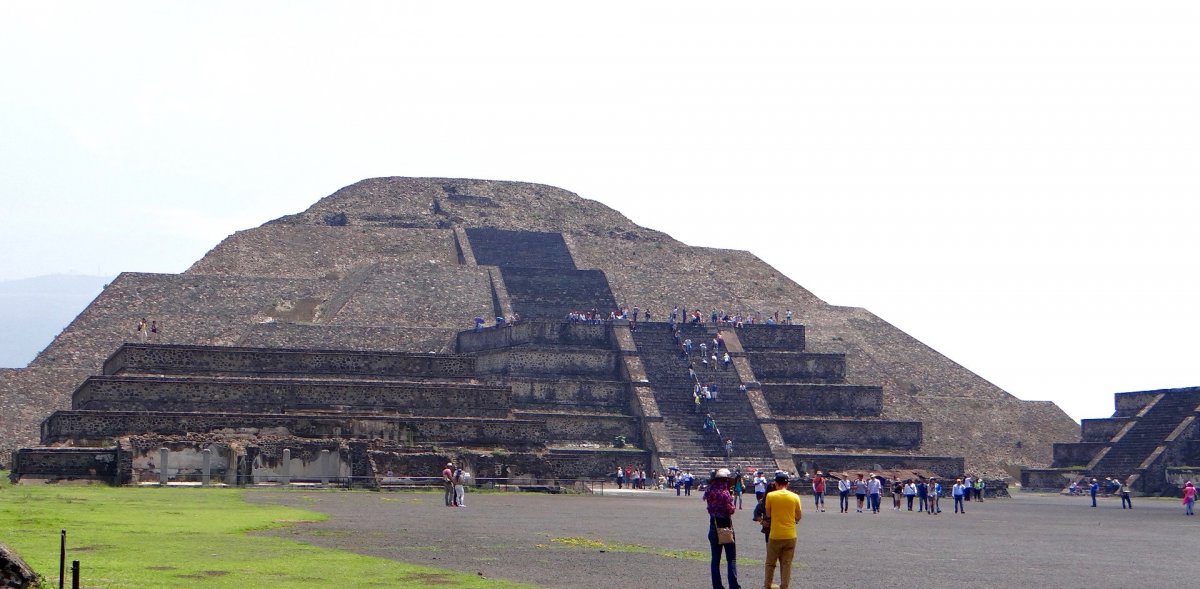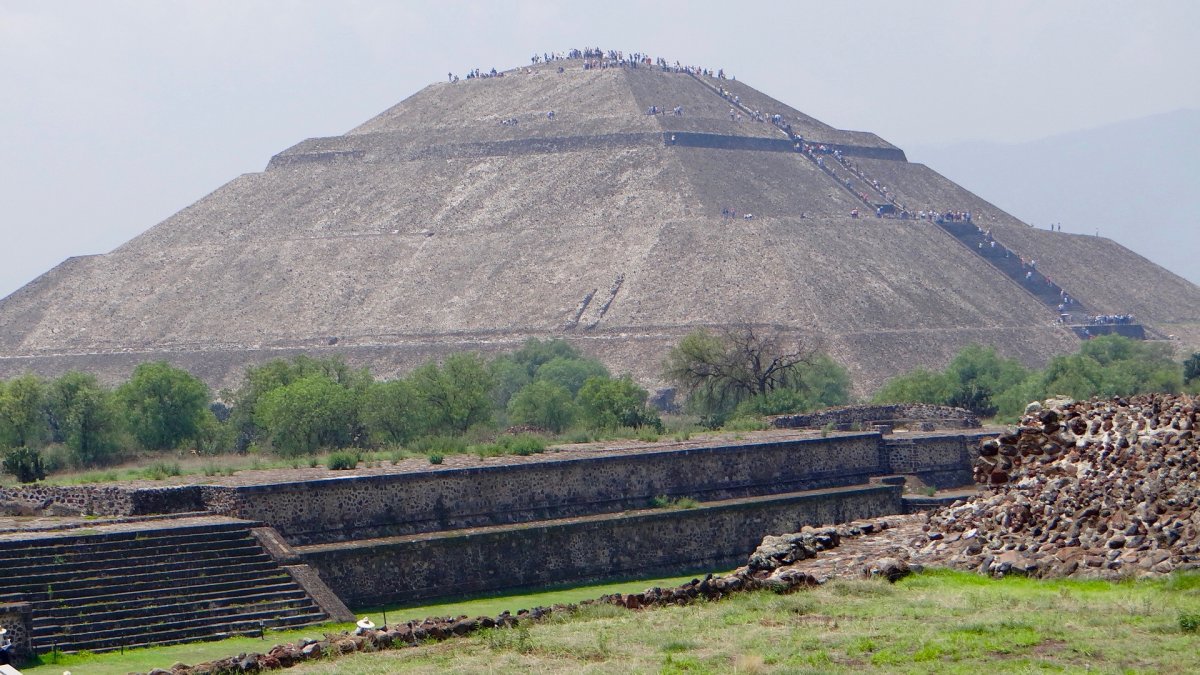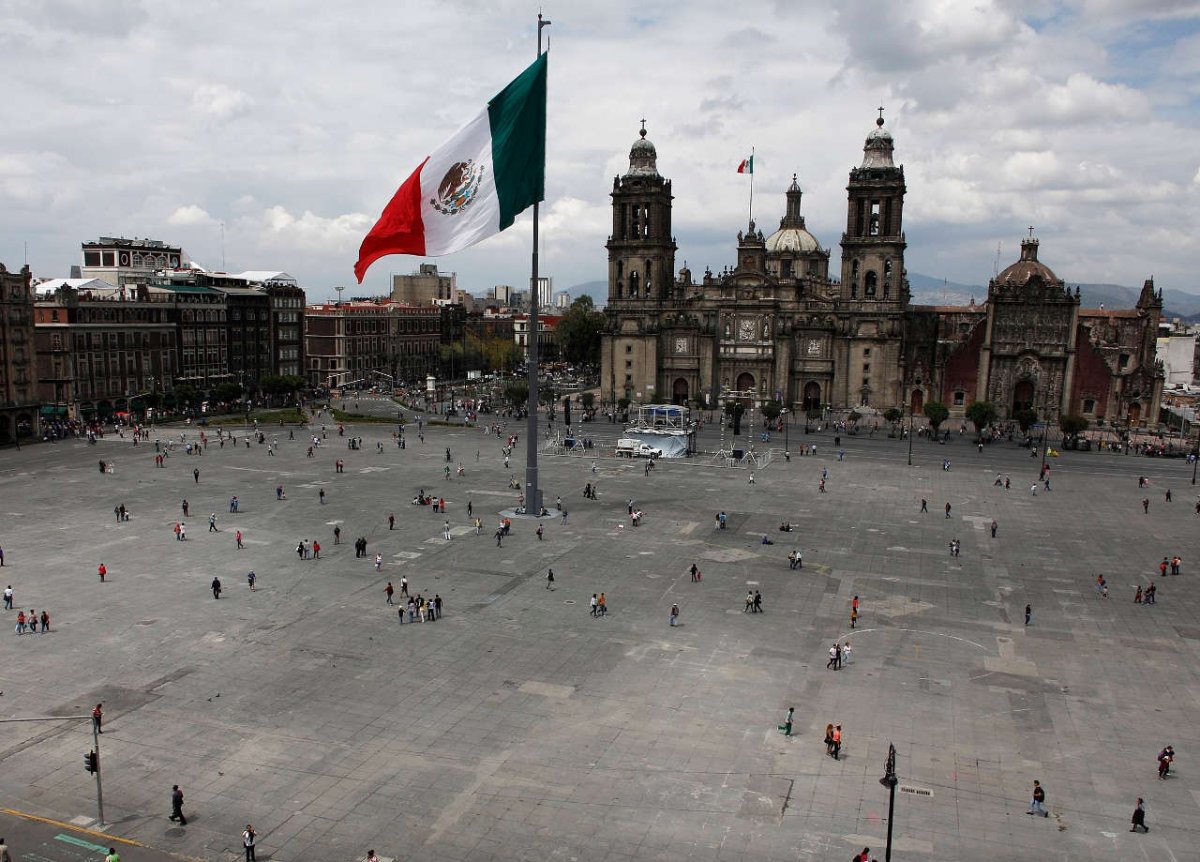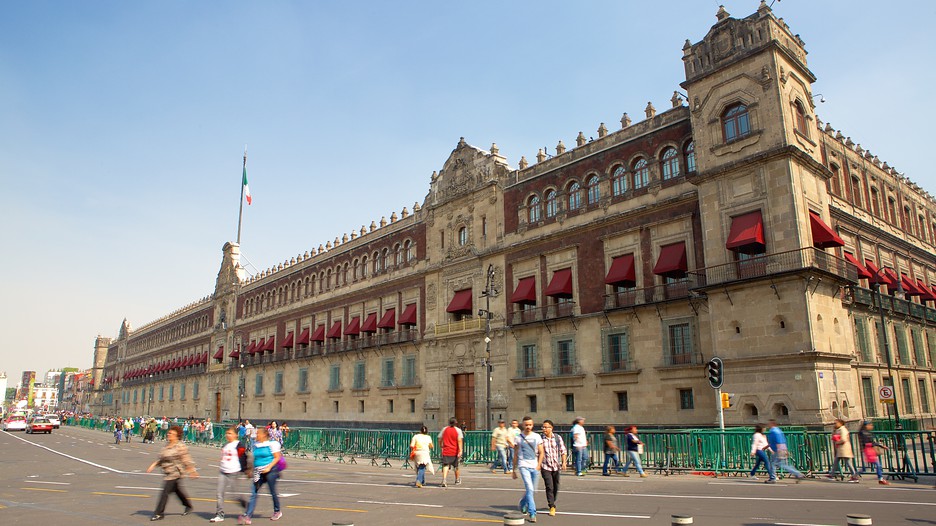As I quickly discovered, Mexico City and its region allow you to travel through centuries and several phases of history.
San Juan Teotihuacán, on the outskirts of Mexico City, thrived as a city nearly two thousand years ago. The rise and decline of the civilization that resided in Teotihuacán is not entirely known, but residents left two enormous pyramids demonstrating their strength and intelligence.

The Pyramid of the Moon.
The Pyramid of the Moon rises about 140 feet tall, and it is the smallest out of the two pyramids. Originally red, it was dedicated to the goddess of water and fertility. The Pyramid of the Sun stands at about 210 feet tall and was most likely used for religious practices, including human sacrifices. If anyone is up for the challenge, you are welcome to climb up the steps. However, you should consider the elements. Your body will feel the lack of oxygen, the 248 steps are quite steep, and if the sun is out, the heat will exhaust and dehydrate you. If you decide to embark on this strenuous journey, good luck! I’ve heard it is worth it.

Dozens of people bravely climb the Pyramid of the Sun.
Most people have heard of the Aztecs, or Mexicas (the terms are interchangeable). They founded what we now call Mexico City. Aztec civilization is thought to have originated from a location called Aztlán, a location that is unknown today. According to legend, their god, Huitzilopochtli, instructed the Aztecs to leave their home and look for a new one. They would know the location of their new lands when they saw an eagle eating a snake on top of a nopal (cactus). When they encountered this sign, the Aztecs decided to call their new home Tenochtitlán.

Its tricolor flag includes a code of arms in the middle as a representation of the sign given by Huitzilopochtli to the Aztec.
By the 13th century, Tenochtitlán had become a well-established city. Archaeologists have created two- and three-dimensional models to visualize how Tenochtitlán looked when the Aztecs occupied the region. Examples of these projects can be found in the National Museum of Anthropology in Mexico City.

At the top of this picture, there is an image illustrating an aerial view of Tenochtitlan and the bottom shows a three-dimensional model of the city.
The model in the image above shows the city’s civic center. Here, the Aztecs performed ceremonies, including human sacrifices. To the Aztecs, human sacrifice was perhaps the most profound way to appease the gods.
In 1519, Hernán Cortés sacked Tenochtitlán with the aid of fellow Spanish conquistadores and the Tlaxcalans, their indigenous allies, who were not fond of the expanding Aztec empire. It was a mutually beneficial alliance. Cortés took the riches belonging to the Aztecs and the Tlaxcalans destroyed an enemy. Little did the Tlaxcalans know that their alliance would have a wider range of unintended consequences.
What was left of Tenochtitlán is what is commonly known today as the Zocalo. The structures built by the Aztecs shown in the model are no longer there. Spanish settlers created new buildings in place of the Aztec structures. Today this is a prime tourist location.

This image shows the Zocalo, a spaced occupied by the Aztecs, colonizers, and contemporary people. The National Palace is situated to the left of and to the right the Metropolitan Cathedral.
One of the buildings surrounding the Zocalo is the Metropolitan Cathedral of the Assumption of the Most Blessed Virgin Mary into Heaven. The cathedral was erected shortly after the fall of the Aztecs. The cathedral replaced one of the main temples the Aztecs had used to worship their gods.
Mexico’s National Palace is another structure that surrounds the Zocalo. The National Palace has long been a government building, as viceroys occupied it during Mexico’s colonial era, and it is now the seat of Mexico’s current government.

A view of the National Palace from the outside of the Zocalo.
Besides being a great tourist site, the Zocalo is also used to hold protests against government policies. This summer, I witnessed a group of people speaking against the current Mexican leadership’s neo-liberal reforms, calling instead for a socialist government.

Protestors rallied next to the Metropolitan Church. The sign states: The crimes of the state will not stop the fight for socialism.
Over the last several years, teachers in Mexico have used the space to protest the newly introduced education reforms. According to these new rules, teachers will be evaluated in order to identify if they are qualified to perform teaching duties. This law would also decrease the amount of federal funding schools receive. Schools would have to fund themselves, most likely by charging students tuition. Protesters have been confronted by significant numbers of police.

Police show their force as they monitor protests.
Part of what makes Mexico City so fascinating is the way in which past and present blend together. The monuments of past civilizations are an integral part of a dynamic, living city. The demonstrators who fill the Zocalo in 2016 gather with the ghosts of those who stood in the same place when the city was called Tenochtitlán.
[All photos by author, 2016]
